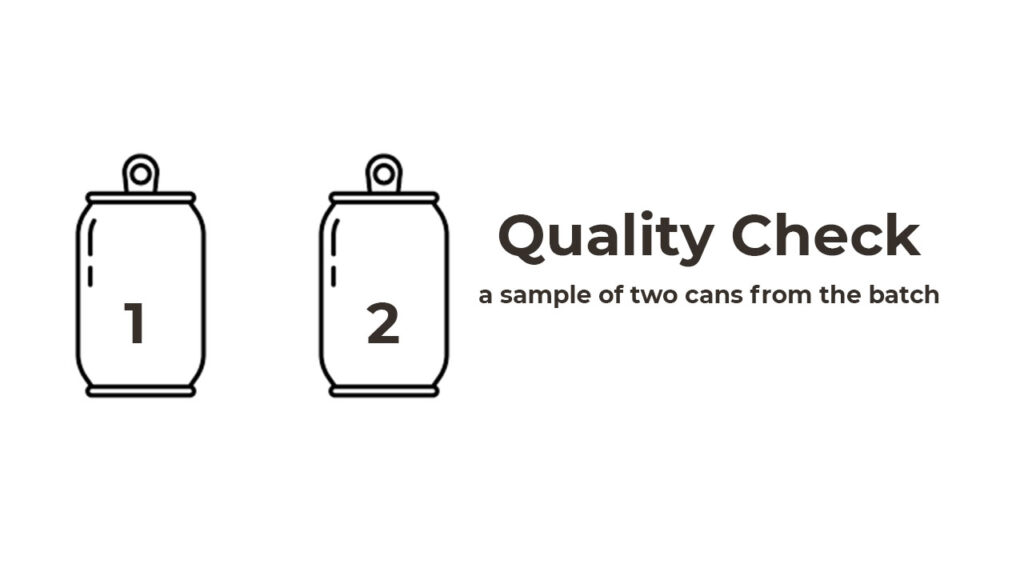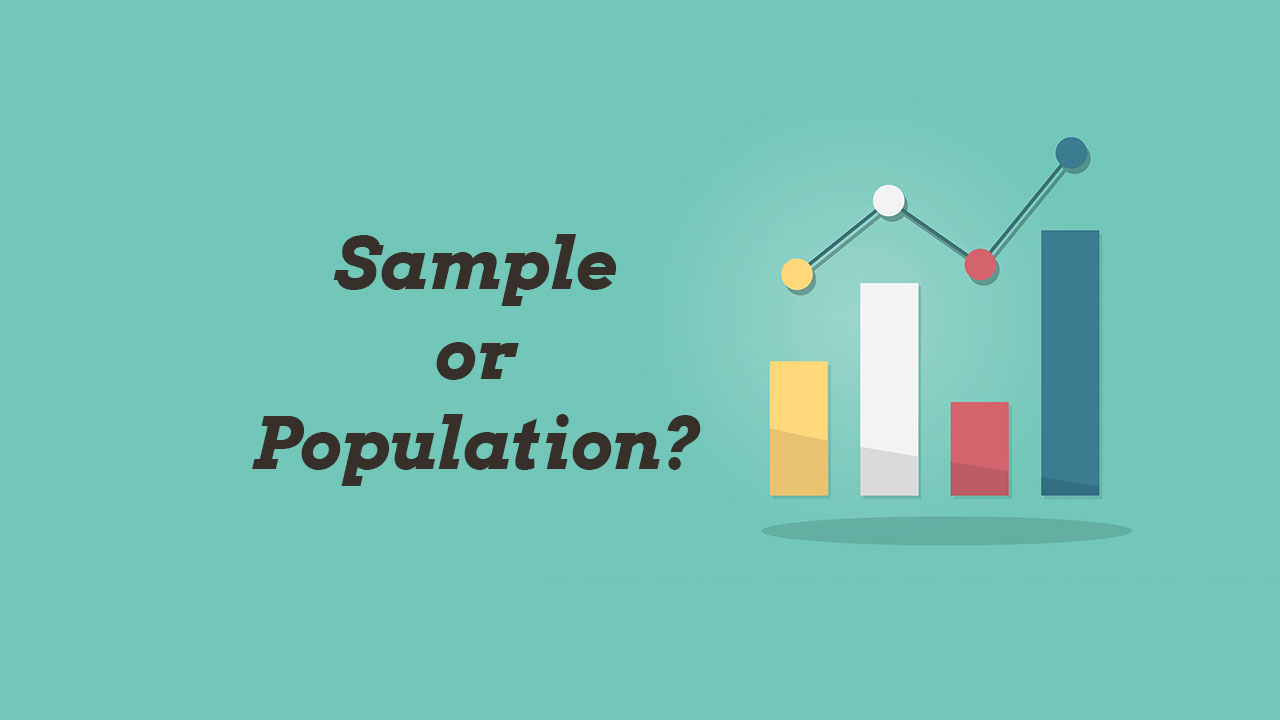The difference between samples and population is small but significant (no pun intended). Although you may already have an intuitive sense of these words, it would still be useful if you know how they differ. Also, keep in mind that there are certain aspects of similarity as well between both of these.
What is a population?
I have found that my students are more confused about the definition of population than they are about the definition of a sample. When you hear the word population, it is natural to think of the human population. After decades of associating this word with the human census, it is just natural. However, let us try to understand it better. However, population is a term in statistics that denotes the consideration set for any analysis.
⚡ A population is a collection of all the items under a specific criterion.
The first step in defining any population is defining the criterion. Criteria will decide whether any element will be a part of this group or not. You must have studied set theory in your math class. Consider population as a set P whose members have to fulfill a certain criterion to become a part of it. One example of a population would be a set of all women living in Philadelphia, who purchased your product in the last three months. Since we have defined the eligibility criteria for this set we will have a finite number of elements inside this population.
P1= {set of people, given that (they are women; live in Philadelphia; purchased your product in last 3 months)}
As a simpler example, let us consider a population as a set of numbers. In this population, we will consider only whole numbers that are less than ten. Therefore, in this set, we shall have all numbers between 1 to 9.
P2 = {1,2,3,4,5,6,7,8,9}
As the third example, let us take something that is slightly different. In this case, we shall take a batch of soft drink cans coming out of plants. As you can see in the video below, there are the cans that are getting filled at the filling station.
Now we define the population as any can that has come out in a specific batch. It is also important to note that the definition of the population may change from one context to another. For instance, in another context, maybe want to define the population as all the bottles that have come out of a bottling plant in an entire year.
What is a sample?
A sample is defined as a subset of the population. Typically, the sample may contain a collection of some, but not all of the elements of the entire population. We shall take the cases that we have discussed earlier to explain this point further.
In the first example, we had taken a population with consisted of all the women who are living in Philadelphia and would have purchased your product in the last three months. Now we shall choose an appropriate sample from this population for our analysis. This sample can be a set of 30 women or a set of 60 women. Or any other number of women we select from the given population.
Secondly, let us consider the example that we have discussed regarding the numbers. We have defined this population as a set of all numbers that are whole numbers and are less than 10. Now if we take a set of all the even numbers that are less than 10 Then we get the following subset of raw data.
S1= {2,4,6,8}
Similarly, we may take a subset as S2.
S2 = {1,3}
Alternatively, we can have a random set of numbers such as the following set:
S3 = {1,2,6,9}
Finally, let us take the third set that we had discussed earlier. In this case, if we just take the two cans from the batch, we are left with a sample that has two cans.

Why do we need a sample?
There are a lot of advantages of using a sample over a population. Firstly, and most importantly, it reduces the amount of effort that is required to process a vast amount of information. This can be illustrated very easily with the first example that we had taken above.
Let us consider that your company wants to understand that what were the pain points of the customers of your product. Now, the best way to do this is to go ahead and interview all the women that are there in your target population. However, there may be 50,000 women that fulfill that criterion. Now it is extremely expensive and cumbersome to conduct interviews for 50,000 women.
On the other hand, if you sample a set of just 30 women from this population, then the interview process will be faster, convenient, as well as cheaper.
Functions and advantages of using a sample
A sample has the following advantages over the population. These advantages are notable when we start doing analysis from the data.
- It is far cheaper to collect data from a sample than from a population.
- Data collection becomes much faster as well from a sample.
- It is less tiring for the researchers to conduct the analysis on a sample.
- It feels like medical science. Certain tests may be risky for the individuals. Therefore, it makes sense to conduct these tests on a smaller sample.
- Similarly, in case of testing of quality of products, it makes sense to test only a small subsample. If you want to crash, test a car to see that whether it is safe at a certain speed or not. It does not make sense to crash test all the cars that you have made. You only want to press test one or two cars.
Why does the sample need to be ‘representative’?
This is another important point that every researcher analyst or statistician needs to understand. A sample becomes meaningful mostly when it represents the population closely. This is a very common mistake by a lot of people. Usually, we select the most convenient sample rather than the most representative. This leads to errors in analysis and also errors in the judgments. Again, we shall be taking the examples that we have discussed above to illustrate this point further.
Example 1
In the first example, we’re trying to study the target group to understand the customer pain points. Now we have selected a subset of 30 women from the target population. On one hand, it has made our work easier, cheaper and simpler. However, let us consider that this subsample is not a good representation of the population. For example, you went to a relatively poor neighborhood and collected all your data. In this case, when you interview these women, it could be likely that all of them say that they find your product to be expensive. On the other hand, if you went to a richer neighborhood and collected data from two adjacent streets, then you may again get very similar answers. For instance, they may all complain that your store is located too far from their home. If you collect this type of data then it is a very skewed representation of the population. Therefore, the insights that you get from this sample will be highly distorted.
On the other hand, if you collected data that represents women from low-income, middle-income, and upper-income groups. Additionally, you ensured that they represent people from different localities, different ethnic backgrounds, and so on. As you make your sample more diverse and more representative of the population, you will find a more useful and diverse set of responses.
Example 2
In the second example, let’s first take a distorted set that does not represent our population. Now if we consider subset S2. From this subset, if we try to infer the properties of the population set, we will get erroneous results.
For example, the average sample is 2, while the average population is 5.
Example 3
Let us consider a study where you want to understand that what is the form height for each can while filling them. Let us say that you have taken a sample of two cans for this study. That too, from the two rightmost cans of the lot shown in the video.
If you closely observed the video then you would have realized that the second last bottle is filled slightly more than others. Therefore, if you take a sample of two bottles that are on the right-hand side, you will find that average foam height that is more than the real average of all the cans.
What is the difference between samples and population?
Firstly, a sample is a subset of the population. In order for a set to be considered a sample, it has to be smaller than the population, but it has to have all the elements that are present in that population.
Secondly, a sample needs to be representative of the population. However, at times sample may not be exact. Replica of the population in terms of the specifications. When these sampling errors are small. Then we have a good sample. However, in some cases, we may have a higher sampling error.
The third difference is that a population gives us an idea of what we are considering for the analysis. On the other hand, a sample helps us operationalize that idea into meaningful analytical insights.
Are there some similarities between them?
Samples and populations are similar as well. We have looked at the difference between samples and population. However, now we shall look at the similarities.
Firstly, the sample and population must have the same type of elements.
Secondly, a good sample will have a similar set of specifications as the population.
Thirdly, in some cases, samples may be interchangeably used with the population. This is more often true in the case of big data analysis. Higher power computers and access to a large number of data make it possible for modern analysts to analyze an entire population. Sometimes this may give better results than analyzing a small sample.
